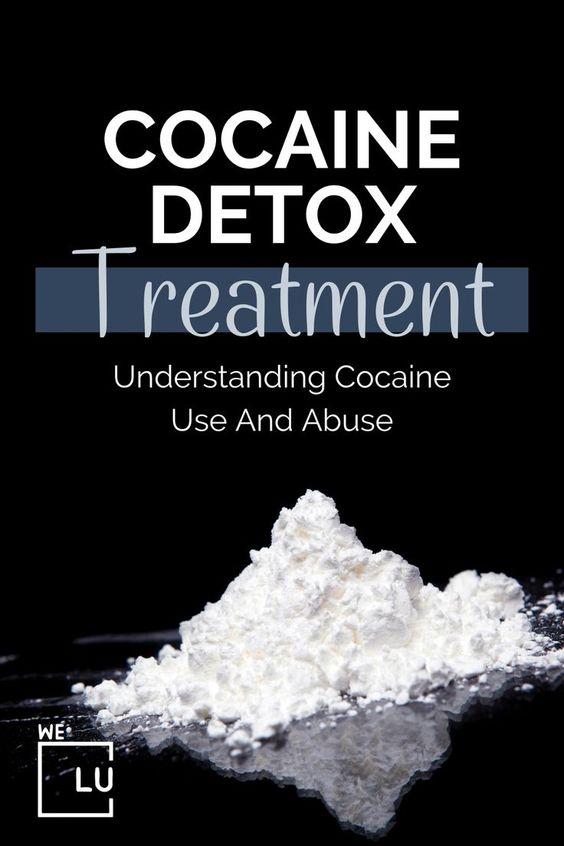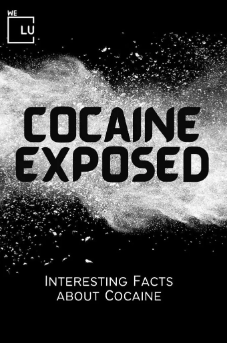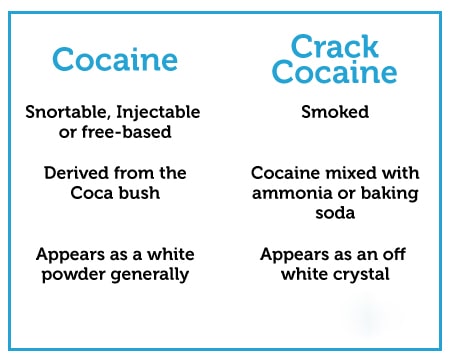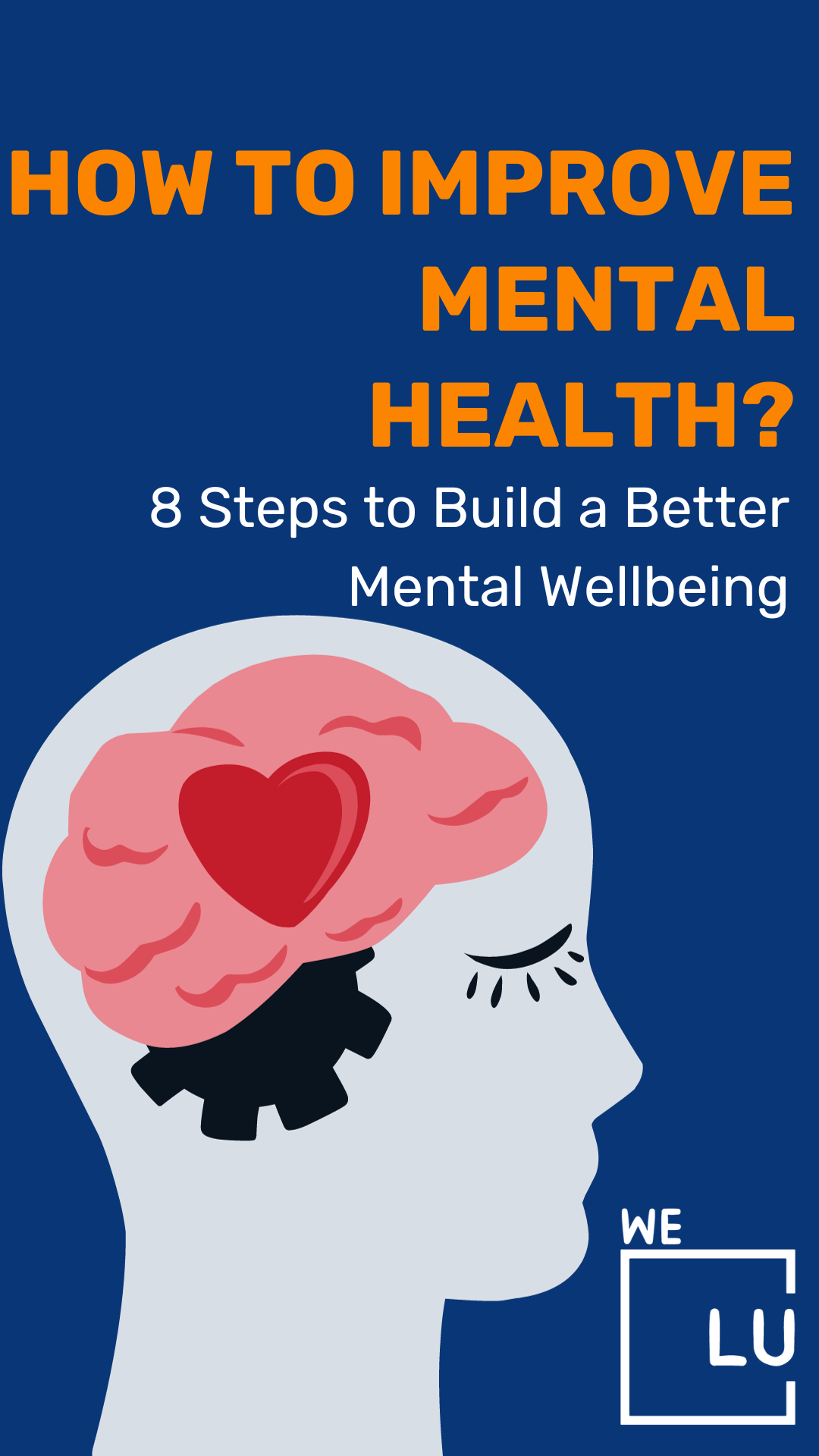What Does Cocaine Smell Like?
If you are searching for “What does cocaine smell/taste/look like?” you’ve arrived at the right place. Pure cocaine has a sweet and flowery scent, but the likelihood that someone with a history of cocaine use buying a pure derivative is little to none. The process of extracting cocaine from coca leaves and mixing it with cheap cutting agents and additives found in street-cut cocaine results in a metallic smell. Some chemicals and additives combined with pure cocaine have distinctive smells, allowing the user to identify the ingredients in their batch of cocaine.
Cocaine with either gasoline or kerosene added will give off a petroleum scent, such as the one you might smell after a diesel pickup truck passes you by. What any particular batch of cocaine smells like is also affected by how it is used, such as intravenous injection, smoking, or snorting freebase cocaine. Some chemicals used to manufacture cocaine have distinct smells that help people identify the substance. Cocaine manufacturing chemicals give off odors, including:
- Gasoline
- Kerosene
- Diesel
- Carbonate salt
- Sulfuric acid
- Ammonia
- Potassium permanganate
- Caustic soda
What does crack smell like? What cocaine smells like may also vary depending on the method of administration a person uses. Someone who snorts cocaine will probably notice a chemical or metallic smell, but someone who smokes the drug may smell burnt plastic or rubber.
What Is Cocaine Made From?
Cocaine stimulant is a severely addictive drug made from the coca plant leaves. It increases the natural chemical messenger (dopamine) levels in brain circuits that control movement and reward. Cocaine comes in a few different forms. [1] The most common is a fine, white powder. It can also be made into a solid rock crystal.
Today, cocaine is a Schedule II controlled substance, [2] which means that it has a high potential for abuse but can be administered by a doctor for legitimate medical uses, such as local anesthesia for some ear, eye, and throat surgeries. For people who use cocaine, depression after use is common, even when they do not use it regularly. The reason cocaine and depression have this relationship relates to how the brain works. As a stimulant, cocaine activates the sympathetic nervous system, which governs the fight-or-flight response.
Unfortunately, no matter how much cocaine is taken, it is dangerous. Some of the most common severe effects of cocaine use include heart attack and stroke. Addiction recovery professionals recommend facing cocaine addiction with a long-term substance abuse treatment plan that promotes positive decision-making and overall health improvements, including learning coping skills.
Cocaine is a highly addictive illegal drug used by 14-21 million people worldwide. [3] In 2018, there were 874,000 new cocaine users. [4] What does cocaine smell like? Since cocaine is combined or ‘cut’ with other chemicals, people have no idea if the dose will be weak or strong. These other chemicals may include fillers, such as paint, cornstarch, fentanyl, and its analogs, which are added purely to boost profits and often lead to the risk of cocaine perforated septum and cocaine and erectile dysfunction.
What Does Cocaine Look Like?
What does pure cocaine look like? Cocaine is typically sold as a white powder but can also be found as a pink or brownish paste. It tastes bitter and may be cut with other additives that give it a unique texture and odor.
However, cocaine is typically sold in off-white or cream in color, although it can also be yellow-brown, pink, or rose-colored. Cocaine also has a characteristic “salt-like” texture.
Cocaine is often found in powder form but can come in pills, liquid, or suppositories. The powder is most commonly snorted, while pills, liquid, and suppositories are typically injected, swallowed, or rubbed into the gums.
Cocaine is most commonly snorted but can be rubbed into your gums, injected directly into veins, or made into a suppository. As a stimulant, it increases the heart rate and can cause euphoria, impulsiveness, and increased sociability. However, it also increases irritability and can cause paranoia, heart palpitations, insomnia, and even convulsions.
Cocaine is often mixed with additives, such as caffeine and talc. This makes producing larger amounts of the drug easier with less cost and resources. These additives can increase the risk of adverse side effects such as increased heart rate, blood pressure, and damage to the nasal passages when snorted. It can also increase the risk of overdose and other ingested medical issues.
What Does Cocaine Taste Like?
Cocaine has a bitter and numbing taste. Cocaine is often described as having a metallic taste too. While some people have compared the taste of cocaine to that of perfume or soap. Other reports indicate that cocaine has a sweet, licorice-like, or tart flavor. Some people report that it has a chemical, vinegar-like flavor. Thus, it is the additive ingredients to cut the Cocaine that affect its taste.
How Is Cocaine Made?
What does pure cocaine look like, and how its made? Different methods are used to make cocaine. In one method, dried coca leaves (the main ingredient in cocaine) are soaked with lime water or other alkaline liquids and then extracted with gasoline in metal drums. Workers use sulfuric acid to remove the dissolved cocaine and form a liquid solution to which lime or other alkaline liquids is added, leading to the precipitation of coca paste. Workers then add acid and potassium to remove impurities, followed by bicarbonate to cause the base to separate. The base is dissolved in a solvent like acetone and soaked again in acid. Finally, the cocaine paste is filtered through a cloth to separate, then dried.
What is cocaine made from? The base can be dissolved in a solvent, such as acetone, ether, or ethyl acetate, and heated in a hot water bath. Methyl ethyl ketone is another solvent that workers add to the hot liquid mixture, along with hydrochloric acid, leading to cocaine hydrochloride crystallizing in the solution. Solvents are pressed out by hand, followed by a hydraulic press, then the mixture is heated in a microwave to create cocaine powder.
Powdered cocaine can be further processed into crack by mixing it into either ammonia or a combination of baking soda and water, then heating that mixture to create a substance that forms rocks for smoking. An alkali substance can be mixed into a heated liquid cocaine solution that settles to the bottom as a solid. Some adulterants, or cutting agents, can be filtered out by creating crack cocaine.

Skip To:
Learn More:

Get Your Life Back
Find Hope & Recovery. Get Safe Comfortable Detox, Addiction Rehab & Dual Diagnosis High-Quality Care.
Hotline(844) 597-1011Why Cocaine Smells Like Gasoline?
Manufacturers soak coca leaves in gasoline and various chemicals to extract the base from the leaves. The smell of cocaine varies. Sometimes it smells sweet and flowery. Other times, it smells like gasoline, burnt rubber, or melting plastic. Most people can’t detect the odor without holding cocaine close to them.
The Smell Of Other Forms Of Cocaine
Cocaine is a versatile substance that can come in many colors and have an intense smell and taste. Knowing how to identify cocaine by look, smell, and taste can help you know whether or not a loved one is abusing this destructive and addictive drug.
What Does Pure Cocaine Smell Like?
Pure cocaine has a pungent, bitter chemical odor that is easily recognizable. This odor is often compared to diesel fuel, glue, or paint thinner. When cocaine is snorted, smoked, or injected, it can have an even stronger and more intense scent.
Cocaine can also be mixed with other substances that may change the odor and intensity of the drug. For example, when mixed with heroin in a process known as speedballing, the cocaine may produce a sweetly pungent scent. The most common additives for cocaine are baking soda and talcum powder. These both have a very faint odor that is distinctive when mixed with cocaine.
What does cocaine smell like in its powdered form? Powdered cocaine generally combines chemical and sweet and light floral-smelling compounds.
What Does Crack Smell Like?
Crack cocaine is a dangerous and highly addictive stimulant that has become one of the most abused drugs in the U.S. Because of this, it is crucial that anyone concerned they may have a loved one addicted to crack cocaine ask the question,” what does crack smell like?” Knowing what specific drug, you are dealing with first can help pinpoint what sort of help your loved one needs.
What does crack cocaine look like? To the naked eye, powder cocaine looks different from crack cocaine, but each drug holds very other pharmacological differences—the critical difference is how they are ingested. Cocaine has many ingestible options, including snorting, injection, and swallowing, whereas crack cocaine can only be smoked in freebase format.
What does crack cocaine smell like? Crack cocaine usually gives off an odor of burnt plastic and can smell like many commonplace cleaning solvents, such as bleach, of which ammonia is a primary ingredient. Searching for “what crack cocaine smells like?” if you suspect a loved one abusing the drug, it’s wise to seek help as soon as possible!

What Does Crack Smell Like When Smoked?
What does crack smoke smell like? And what does smoking crack smell like when smoked? Smoked in a pipe and highly potent, crack cocaine provides an intense but short-lived high that can quickly lead to addiction and other severe side effects. Some users report that crack cocaine smells like engine oil. The resemblance between these two substances is due to their shared chemical composition. Both petroleum and crack are composed of hydrocarbons (an additive in cocaine).
The Smell Of Other Forms Of Cocaine
Searches for “what does cocaine smell like?” or “what does crack smell like?” will reveal that Cocaine and Crack Cocaine usually have a chemical-like odor described as resembling gasoline, ether, or cleaning fluid. But that will depend on what additive the Cocaine is cut with.
It can be pretty challenging to smell other forms of cocaine that are not in powdered or rock form, as the only other type of cocaine is that which is used intravenously. Liquid cocaine is not in its own right a manufactured or synthesized drug but is the result of dissolving the powdered substance in water, weakening the smell drastically. You may still be able to smell liquid cocaine faintly and, in particular, pick up on the substance’s kerosene or ammonia-like ‘notes’.
Crack Cocaine Drug Facts
Cocaine can be snorted, injected, or smoked. Most people who use cocaine prefer to snort it. However, it can also be consumed by mixing it with other substances such as tobacco or marijuana. When smoked, Cocaine can create a stronger, longer-lasting effect. When injected, the cocaine is absorbed directly into the bloodstream, and its effects are felt almost immediately.
What is crack cocaine?
Crack cocaine is a highly addictive and powerful stimulant derived from powdered cocaine using a simple conversion process. Crack emerged as a drug of abuse in the mid-1980s. It is abused because it produces an immediate high. So, what does Cocaine taste like? Is it easy and inexpensive to produce? Continue reading for more.
How is Cocaine produced?
Crack is produced by dissolving powdered cocaine in water, ammonia, or sodium bicarbonate (baking soda). The mixture is boiled until a solid substance forms. The solid is removed from the liquid, dried, broken into chunks (rocks), and sold as crack cocaine.
What does cocaine look like?
Crack typically is available as rocks. Crack rocks are white (or off-white) and vary in size and shape.
How is crack abused?
Crack is nearly always smoked. What does crack cocaine smell like? Smoking crack cocaine delivers large quantities of the drug to the lungs, producing an immediate and intense euphoric effect.
What Does Cocaine Taste Like? (Street vs Pure Powder?)
Cocaine typically has a metallic taste with a bitter and numbing aftertaste. Some people also describe it as having a salty, chemical-like flavor. The taste may vary depending on the type of cocaine.
What does cocaine taste like for some people? Cocaine has a bitter, chemical taste that can be difficult to describe accurately. Some people have described the taste of cocaine as having a slight numbing effect on the tongue and mouth, almost like the sensation of a dentist’s Novocain injection. However, the taste of cocaine can vary depending on its purity, processing, and any added adulterants or cuts that may be present.
What does cocaine taste like as pure powder?
Pure, unadulterated cocaine has a bitter, chemical taste that can be felt at the back of the tongue and throat. It also has a numbing effect on the tongue, which can be felt almost immediately. It’s important to note that adding various cuts, or adulterants, to cocaine to increase profits and potency can affect its taste and produce different sensations when ingested. Adulterants can change the purity, potency, and effects of cocaine, making it even more dangerous to use.
How is crack abused?
Crack is nearly always smoked. Smoking crack cocaine delivers large quantities of the drug to the lungs, producing an immediate and intense euphoric effect.
Short-Term Effects of Cocaine
- Extreme happiness and energy
- Mental alertness
- Hypersensitivity to sight, sound, and touch
- Irritability
- Paranoia—extreme and unreasonable distrust of others
What are the risks?
Cocaine, in any form, is a powerfully addictive drug, and addiction seems to develop more quickly when the drug is smoked–as the crack is–than snorted–as powdered cocaine typically is.
In addition to the usual risks associated with cocaine use (constricted blood vessels; increased temperature, heart rate, and blood pressure; and risk of cardiac arrest and seizure), crack users may experience acute respiratory problems, including coughing, shortness of breath, and lung trauma and bleeding. Crack cocaine smoking also can cause aggressive and paranoid behavior.
Is crack cocaine illegal?
Yes, crack cocaine is illegal. Crack cocaine is a Schedule II substance under the Controlled Substances Act. Schedule II drugs, which include PCP and methamphetamine, have a high potential for abuse. Abuse of these drugs may lead to severe psychological or physical dependence.
What does Cocaine taste like vs. Crack?
Cocaine and crack cocaine have different tastes due to their chemical composition and how they are ingested.
Powdered cocaine typically has a bitter, chemical taste, which can slightly numb the tongue. The bitterness arises from the alkaloids present in the coca plant.
Crack cocaine, conversely, has a harsh, acrid taste and a strong chemical smell due to the additives used in its preparation. The chemicals used in processing crack cocaine, such as baking soda or ammonia, give it a unique taste compared to powdered cocaine.
In general, it’s important to remember that both cocaine and crack cocaine are highly addictive and dangerous drugs that can cause severe physical, mental, and emotional consequences. Using cocaine and crack cocaine can lead to addiction, overdose, and potentially fatal health problems. Seeking professional help from a healthcare provider or addiction specialist is strongly recommended if you or someone you know is struggling with cocaine addiction.
Crack Cocaine Addiction Statistics
Since its creation, scientists and researchers have tracked crack’s effects on Americans’ health. Given how simple the drug is to obtain and how regularly it’s used, educating the public on the epidemic’s severity is important. Here are a few statistics about crack addiction:
An average of 252 people aged 12 and older used crack cocaine for the first time every day.
Source: SAMHSA
In 2019, 778,000 people aged 12 and older reported using crack cocaine in the past year.
Source: SAMHSA
In 2020, roughly 16,000 people died from a cocaine overdose.
Source: NIDA
Can You Overdose from Smoking Crack?
Yes. Crack cocaine is highly addictive; once a crack addiction is present, the problems stack up exponentially. What does crack smell like when smoked? Smoking crack is a dangerous route of administration by itself, simply because of how the drug enters the system. An unintentional crack overdose can be common and is almost always caused by the urge for a more robust “high”. Many people who use crack believe it to be less likely to cause a crack overdose because it lasts in the body for a shorter amount of time, but that is not true. Like many other illegal drugs, crack cocaine can cause a deadly overdose if an individual takes too much.
Get Help. Get Better. Get Your Life Back.
Searching for Accredited Drug and Alcohol Rehab Centers Near You?
Even if you have failed previously and relapsed, or are in the middle of a difficult crisis, we stand ready to support you. Our trusted behavioral health specialists will not give up on you. When you feel ready or just want someone to speak to about therapy alternatives to change your life call us. Even if we cannot assist you, we will lead you to wherever you can get support. There is no obligation. Call our hotline today.
(844) 597-1011Factors That Influence The Smell Of Cocaine
What does smoked crack smell like? And what does crack smoke smell like? The purity of cocaine, as well as the chemicals, solvents, and additives combined into it, profoundly affect the smell of the drug. Cocaine hydrochloride, for example, is sometimes used during certain types of nasal or throat-passage surgeries as an anesthetic. This means that taking a puff of cocaine may reduce your ability to ‘smell’ cocaine, as redundant as it sounds.
Cocaine Cutting Agents
What does burning crack smell like? Several cutting agents are used to produce street-quality cocaine to reduce costs and alter the cocaine’s effects on the brain and body.
Some commonly used cocaine-cutting agents include:
- Laundry detergent
- Creatine
- Caffeine
- Powdered local anesthetic such as procaine
- Boric acid
- Fentanyl
- Laxatives
How Does Cocaine Taste Like?
Cocaine has a bitter, acidic, and sweet taste. It can also cause a strong numbing sensation or tingling in the nose and mouth. It is commonly described as having a bitter, numbing flavor when snorted and as a strong, caustic sensation when injected or smoked. So what does cocaine taste like to most people?
As a rule of thumb, regardless of which additives, chemicals, and cutting agents are used in its production, cocaine always has a bitter and numbing taste, similar to that of peppercorns. The taste of cocaine is often described as bitter. The more bitter-tasting the cocaine, the more potent the drug. While cocaine powder is not typically consumed in this manner, people will put cocaine in their mouths to check its purity. Specifically, a person will rub cocaine on their gums when checking purity.
Cocaine that has not been cut will typically numb the gum line when a small amount is rubbed. However, sometimes the cocaine will be cut with a numbing agent so that the result will be the same, and the person may have less pure cocaine without knowing it.
What Does Cocaine Look Like?
Whether in powder or rock form, cocaine tends to be off-white to pinkish or beige in color. Cocaine is derived from the coca plant, native to South America. The coca plant has to be processed to extract the cocaine from the plant. Usually, solvents or acids are used to remove the cocaine hydrochloride from the leaves.
Cocaine hydrochloride tends to be in varying shades of white, but this color can still be different than the cocaine that is sold on the streets. Many drug dealers add cutting agents to cocaine to increase profit or make cocaine seem more potent than other types of cocaine. This added substance can change the color of cocaine. Talcum powder or baby laxatives will make cocaine look white. Other substances, such as powdered caffeine or procaine, can change the hue of the drug significantly and make cocaine look less white.
7 Popular What Does Cocaine Look Like? FAQs
-
What does crack cocaine look like?
Turning cocaine into crack cocaine produces crystals called “rocks.” These range in color from clear-white or opaque white to off-white or yellow.
-
What does a gram of cocaine look like?
It can be difficult to identify cocaine solely by the way it looks. Before cocaine is broken down into a fine powder, it may come in rock form.
-
What does pure cocaine look like?
Color is one of the main metrics used to determine cocaine’s purity at a glance, although color alone cannot guarantee the drug’s purity. As most people know, pure cocaine is white.
-
What does a cocaine plant look like?
The coca plant resembles a blackthorn bush and grows to a height of 2 to 3 m (7 to 10 ft). The branches are straight, and the leaves are thin, opaque, oval, and taper at the extremities.
-
What does a cocaine overdose look like?
There are visible physical signs to look for that can make it apparent the person is overdosing. Cocaine can cause someone’s body temperature to rise very rapidly.
-
What does an 8 ball of cocaine look like?
An 8-ball looks like a small, round ball or pellet of white powder. It is usually sold in plastic bags but can also be wrapped in tin foil or cellophane.
First-class Facilities & Amenities
World-class High-Quality Addiction & Mental Health Rehabilitation Treatment
Rehab Centers TourRenowned Addiction Centers. Serene Private Facilities. Inpatient rehab programs vary.
Addiction Helpline(844) 597-1011Proven recovery success experience, backed by a Team w/ History of:
15+
Years of Unified Experience
100s
5-Star Reviews Across Our Centers
10K
Recovery Success Stories Across Our Network
- Low Patient to Therapist Ratio
- Onsite Medical Detox Center
- Comprehensive Dual-Diagnosis Treatment
- Complimentary Family & Alumni Programs
- Coaching, Recovery & Personal Development Events
Cocaine Abuse
Cocaine is a stimulant that is also overly abused. Cocaine can be used as crack cocaine or in a powdered form. Many cocaine dealers mix the substance with “cornstarch, talcum powder, or flour” to increase profits. They may “also mix it with other drugs such as the stimulant amphetamine, or synthetic opioids including fentanyl.”
These different substances make a dangerous compound, as “adding synthetic opioids to cocaine is especially risky when people using cocaine don’t realize it contains this dangerous additive. Increasing overdose deaths among cocaine users might be related to this tampered cocaine.”
Whether the user knows if the cocaine has an additive or not, they most likely will proceed with its use. In most cases, people snort the powdered form through their noses or rub it into their gums. The powder can also be dissolved and injected into the bloodstream. Once cocaine is processed, it is called “freebase cocaine”.
In the heating process, the crystal rock makes a crackling sound. The crystal is heated to create vapors that can be inhaled into the lungs. Cocaine can also be used with other substances. A more potent combination than cocaine and alcohol is cocaine and heroin, known as a speedball.
Cocaine use disorder happens when a person experiences clinically significant impairment, including cocaine side effects caused by the chronic use of cocaine, including health problems, persistent or increasing use, physical withdrawal, and failure to meet primary responsibilities at school, work, or home.
According to the National Institute on Drug Abuse (NIDA), drug overdose deaths involving cocaine rose from 3,822 in 1999 to 15,883 in 2019. Even though males are more likely to die from taking too much of the substance, it can happen to someone of any gender. [5]
Overdose from cocaine can result in:
- Stroke
- Cardiac arrest
- Respiratory arrest
- Sudden death
The risk of overdose is increased when it is used with other dangerous substances like heroin, fentanyl, and alcohol. The combination of heroin and cocaine, called speedball, is particularly deadly. This combination creates a severe risk of overdose.

Cocaine Abuse Symptoms
When a person uses cocaine, they might feel:
- Upbeat and energetic
- Sensitive to touch, light, or sound
- Restless
- Irritable
- Paranoid
Physical and behavioral signs of cocaine use include:
- Dilated pupils
- Higher body temperature and blood pressure
- Faster heartbeat
- Loss of appetite
- Erratic behavior
Cocaine and Alcohol Abuse
Cocaine and alcohol don’t negate the effects of one another. Instead, they mask the effects, making people unaware of how intoxicated they are. As cocaine is a stimulant and alcohol is a depressant, the collective pressure they put on your body and mind can be dangerous. Some people use cocaine and alcohol simultaneously to increase the effects of both substances. However, this combination can easily lead to life-threatening consequences such as overdose or alcohol poisoning.
People who struggle with schizophrenia and bipolar disorder are especially at risk of substance abuse and polysubstance patterns. Research has shown that a particular demographic is more likely to develop an alcohol use disorder; people with bipolar disorder. This is because of the attempt to modulate mania linked with the condition.
Polysubstance use is, unfortunately, more common than we like to think, and one drug does enough harm to the body alone when abused. Both drugs can cause damage to the user’s body and social and emotional well-being while also increasing their risk of long-term, chronic health issues or overdose. The health dangers of one drug are enhanced by polysubstance use and co-occurring disorder.
World-class, Accredited, 5-Star Reviewed, Effective Addiction & Mental Health Programs. Complete Behavioral Health Inpatient Rehab, Detox plus Co-occuring Disorders Therapy.
CALL(844) 597-1011End the Addiction Pain. End the Emotional Rollercoaster. Get Your Life Back. Start Drug, Alcohol & Dual Diagnosis Mental Health Treatment Now. Get Free No-obligation Guidance by Substance Abuse Specialists Who Understand Addiction & Mental Health Recovery & Know How to Help.
Cocaine Addiction Treatment Near Me
First and foremost, if you think a loved one is abusing cocaine, you should research its drug and addiction to understand better what your loved one needs. Next, you must plan an intervention to provide your loved ones with options to battle their addiction in a safe and supportive environment. During this intervention, offer compassion and support instead of judgment. Lastly, show your support throughout the entire treatment process.
In addition, prolonged Cocaine use can have severe physical and psychological effects, so seeking treatment as soon as possible is essential. Inpatient drug rehab offers intensive care that can help you promptly get through the early stages of withdrawal. Now that answered the question, “what does cocaine smell like? We’ve learned how it can be cut with fentanyl and rat poison which can lead to overdose and death, so it is important not to smell or taste it just to test its purity.
Medically-Assisted Detox
Detox is often considered the first stage of treatment. It will help you navigate the complicated withdrawal process but doesn’t address patterns of thought and behavior contributing to drug use. Various treatment approaches and settings can help provide the ongoing support necessary to maintain long-term sobriety after you complete detox.
Cravings are very common during detox and can be challenging to overcome. This often leads to relapse. Constant medical care provided during inpatient treatment helps prevent relapse. Clinicians can provide the necessary medication and medical expertise to lessen cravings and the effects of withdrawals.
Psychotherapy
Several different modalities of psychotherapy have been used in the treatment of mental health disorders along with addiction, including:
- Cognitive Behavioral Therapy (CBT) is an effective treatment that involves changing both the patterns of negative thoughts and the behavioral routines which are affecting the daily life of the depressed person for various forms of depression.
- Dialectical Behavior Therapy is a comprehensive mental health and substance abuse treatment program whose ultimate goal is to aid patients in their efforts to build a life worth living. The main goal of DBT is to help a person develop what is referred to as a “clear mind.”
- Person-Centered Therapy is a strategy that allows and encourages clients to understand and resolve their concerns in a safe, supportive environment.
- Solution-focused therapy is an approach interested in solutions that can be quickly implemented with a simple first step leading to further positive consequences.
Dual Diagnosis Treatment
Drug abuse and mental health disorders often co-occur. Traumatic experiences can often result in mental health disorders and substance abuse. Dual-diagnosis rehabilitation treats both of these issues together. The best approach for the treatment of dual diagnosis is an integrated system. This strategy treats both the substance abuse problem and the mental disorder simultaneously. Regardless of which diagnosis (mental health or substance abuse problem) came first, long-term recovery will depend largely on the treatment for both diseases done by the same team or provider.

Medication-Assisted Treatments
Medication-Assisted Treatments (MAT) for substance use and mental health disorders are commonly used in conjunction. This includes the use of medications and other medical procedures. During your rehab, the staff from your treatment facility will help you identify what caused your addiction and teach you skills that will help you change your behavior patterns and challenge the negative thoughts that led to your addiction. Sometimes, the pressures and problems in your life make you rely on substances to help you forget about them momentarily.
Searched for “What Does Crack Cocaine Smell Like?”
If you are struggling with cocaine abuse, it is wise to get professional help. The detox process can be painful and difficult without medical assistance. However, getting through the detox process is crucial for continued treatment. We Level Up provide proper care with round-the-clock medical staff to assist your recovery medically. So, reclaim your life, and call us to speak with one of our treatment specialists. Our counselors know what you are going through and will answer any of your questions.
Experience Transformative Recovery at We Level Up Treatment Centers.
See our authentic success stories. Get inspired. Get the help you deserve.
Start a New Life
Begin with a free call to an addiction & behavioral health treatment advisor. Learn more about our dual-diagnosis programs. The We Level Up Treatment Center Network delivers recovery programs that vary by each treatment facility. Call to learn more.
- Personalized Care
- Caring Accountable Staff
- World-class Amenities
- Licensed & Accredited
- Renowned w/ 100s 5-Star Reviews
We’ll Call You
Search We Level Up “What Does Cocaine Smell/Taste/Look Like?” Topics & Resources
Sources:
[1] Cocaine Drug Facts | National Institute on Drug Abuse (NIDA) (nih.gov)
[2] How is Cocaine Used? | National Institute on Drug Abuse (NIDA) (nih.gov)
[3] Acute toxicity from oral ingestion of crack cocaine: a report of four cases – PubMed (nih.gov)
[4] The Treatment of Cocaine Use Disorder – PMC (nih.gov)
[5] Cocaine | C17H21NO4 – PubChem (nih.gov)
[7] Cocaine Overdose Causes, Signs, Symptoms & Treatment-what does crack smell like (welevelupnj.com)
[8] What does crack smell like? | National Institute on Drug Abuse (NIDA) (nih.gov)
[11] What Does Crack Smell Like? Effective Treatment For Crack Addiction (welevelupnj.com)





